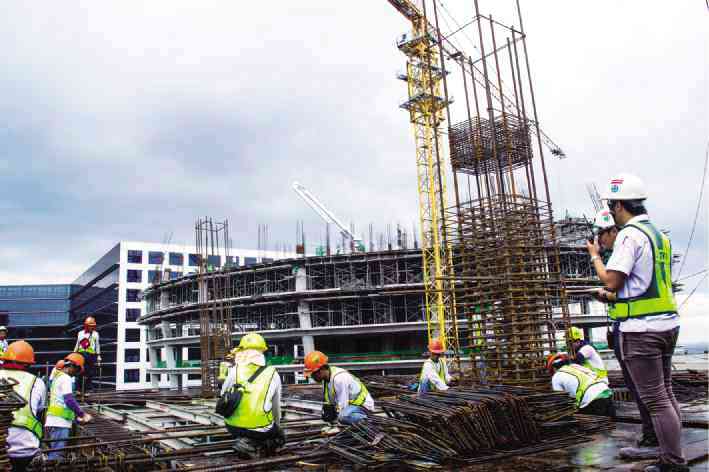
One of the sectors seen to hold growth opportunities for Nordic companies include the construction and infrastructure industry. (File photo from the Philippine Daily Inquirer)
The World Bank (WB) has again cut its growth projections for the Philippines for this year and next year, which the Washington-based multilateral lender blamed on “slower than expected” implementation of public infrastructure projects thus far.
“In 2017, the economy is projected to expand at a slightly slower pace than 2016, at 6.6 percent. The delay in the anticipated push of the planned government infrastructure program has been contributing to the moderation of fixed capital formation growth, softening the growth prospect for the year,” the WB said in its East Asia and Pacific Economic Update October 2017 report released Wednesday.
To recall, the WB in July lowered to 6.8 percent, from 6.9 percent previously, its gross domestic product (GDP) growth forecast for the Philippines, citing that government consumption and investment growth “somewhat weakened” recently following a similar path in public spending during the first quarter even if exports and private consumption kept a strong showing.
The lender’s 2017 forecast was nonetheless still within the government’s 6.5-7.5 percent target range.
For 2018, the WB’s GDP growth projection was reduced to 6.7 percent from 6.9 percent previously, below the Duterte administration’s 7-8 percent yearly growth target from 2018 to 2022.
In 2019, the WB expects Philippine economic expansion of 6.7 percent, a pace also slower than the government target.
The economy grew 6.9 percent last year, among the fastest in the region.
In general, “the medium-term growth outlook remains positive, and is expected to be anchored in growth in the Philippines’ main trading partners which would lead to higher external demand, while imports would remain elevated due to necessary imports of intermediate and capital goods, including for the infrastructure program,” the WB said.
Moving forward, “as the public infrastructure program gains traction, capital outlays and construction activities are expected to rise,” according to the WB.
The Duterte administration early this year unveiled its ambitious “Build, Build, Build” program aimed at ushering in “the golden age of infrastructure” after years of neglect.
Under “Build, Build, Build,” the government would rollout 75 flagship, “game-changing” infrastructure projects, with about half targeted to be finished within President Rodrigo Duterte’s term, alongside plans to spend a total of up to P9 trillion on hard and modern infrastructure until 2022.
“The pace of economic growth could be slower if the government is unable to timely deliver on its planned infrastructure program,” the WB warned.
As such, “complementary reforms to address budget execution and implementation bottlenecks and to ensure high quality of spending are needed,” the lender said.
Also, “consumption growth is expected to remain firm contingent on sustained remittances and expanding credit contributing to improving income levels” in the medium term, the WB added.
According to the WB, “local elections in 2019 will likely boost domestic activities as early as the latter half of 2018.”
In terms of poverty reduction, the World Bank sees the level declining to 22.9 percent next year. The Duterte administration targets to slash poverty incidence to 14 percent by 2022 from 21.6 percent in 2015.
“The pace of poverty reduction may drop slightly in the face of slightly lower overall growth, but poverty is expected to continue to fall as the economy continues its structural transformation. Increased spending in infrastructure would generate construction jobs that are expected to boost poverty reduction,” the WB said. /jpv